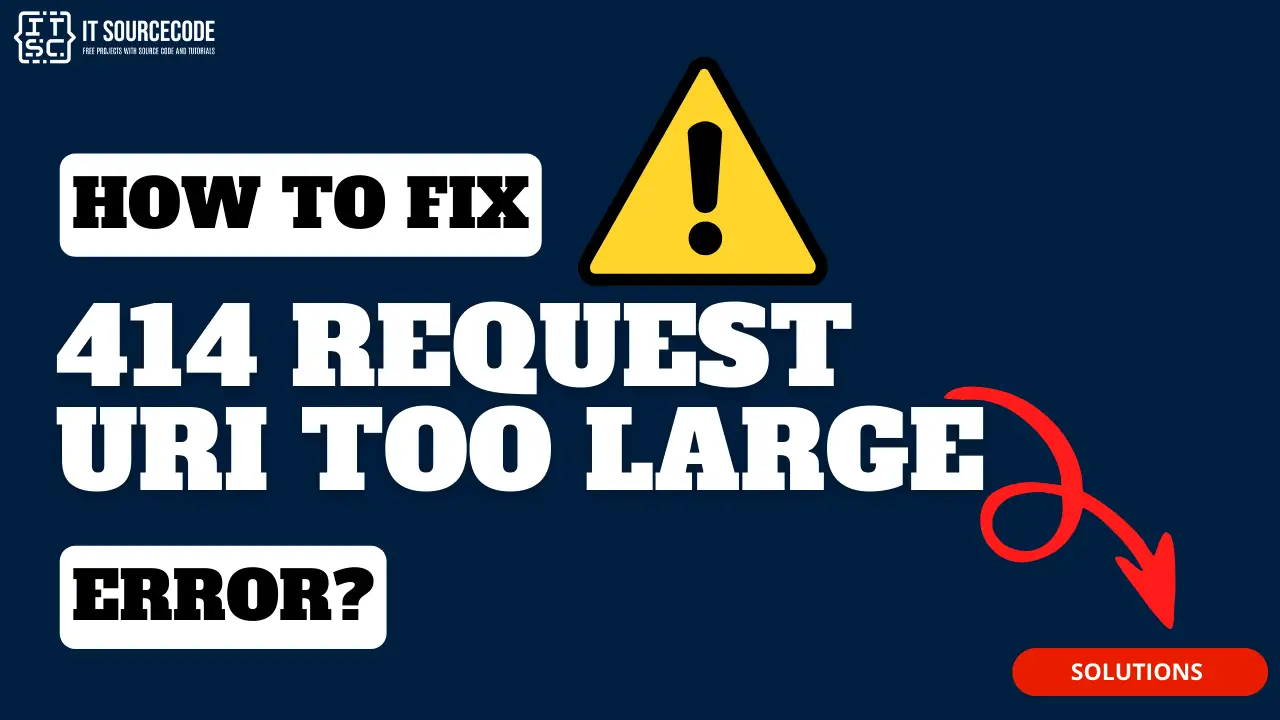What is the “414 Request URI Too Long” Error?
The “414 Request URI Too Long” error is a signal from the server that the requested URL is longer than it can interpret.
This error is usually due to issues on the client side and can affect both the user experience and SEO, as search engines may have difficulty indexing these pages.
Here are some reasons why this error might occur:
- A POST request has been incorrectly converted to a GET request with lengthy query information.
- The client has fallen into a redirection loop, resulting in excessively long URLs.
- The server is being attacked by a client trying to exploit potential security vulnerabilities.
How to Fix the “414 Request URI Too Large” Error?
To resolve the “414 Request URI Too Large” error, you could:
Modify certain configuration settings to accommodate longer URLs.
If you’re using Apache, increase the LimitRequestLine directive value.
Change a GET request with lengthy query information back to a POST request.
Fix improper redirections to avoid redirect loops.
Implement appropriate security measures if the server is under attack.
Solution 1: Access your server
To begin working on your server, the first step is to gain access by logging in.
Once logged in, you’ll need to determine the type of server you’re using. If you’re already aware of your server type, you can proceed to the subsequent step.
Here are some strategies to help you identify your server type:
- Search for a file named “htaccess” in your server’s root directory. If it’s present, you’re likely dealing with an Apache server.
- Utilize the Whois Domain Tools website to help ascertain your server type.
- Reach out to your hosting provider for information.
Solution 2: Locate the Server Configuration File
You’ll have to delve into your advanced configuration settings to locate a directory that houses all the files for your site.
Your goal is to locate the “etc” folder, which contains your configuration file.
Depending on the type of server you’re using, your file will resemble one of the following:
- Apache: /etc/apache2/apache2.conf
- Nginx: /etc/nginx/nginx.conf
Solution 3: Modify the Configuration File
Having located your file, it’s time to make adjustments to rectify the HTTP 424 status code error.
Initially, you’ll need to open your configuration file using an editor. The subsequent steps will vary based on your server type.
For Apache servers, adhere to these steps:
- Search for the LimitRequestLine setting or append it to the end of your file if it’s absent.
- Set the value to at least 128000. If a higher value is required, ensure it’s a multiple of two.
For Nginx servers, adhere to these steps:
- Search for the large_client_header_buffers settings. You’ll encounter two values related to number and size.
- You can now modify the size. You can select a value between 8K and 128K, and if a larger value is required, ensure it’s a multiple of two.
After adjusting the size to the required value, save your changes and re-upload your configuration file to the server.
You can revisit your site, and the 414 URI Too Long error should no longer be present.
Frequently Asked Questions (FAQs)
How do I fix the “414 URI too long” error?
To fix the “414 URI Too Long” error, you can try the given solutions above.
What is the 414 response code?
The 414 response code, also known as the “414 Request URI Too Long” error, is an HTTP status code.
It indicates that the requested URL is longer than the server can interpret.
This error is usually due to issues on the client side.
What is HTTP Error 414 in Chrome?
HTTP Error 414 in Chrome is the same as the “414 Request URI Too Long” error.
It means that the URL you’re trying to access is too long for the server to process.
The solutions would be the same as those mentioned above.
Conclusion
In conclusion, we have discussed the “414 Request URI Too Long” error, which is a signal from the server indicating that the requested URL is longer than it can interpret.
By following the provided solutions above, you can rest assured that you will be able to resolve this issue.
For further learning, you can also check the following HTTP status code:

